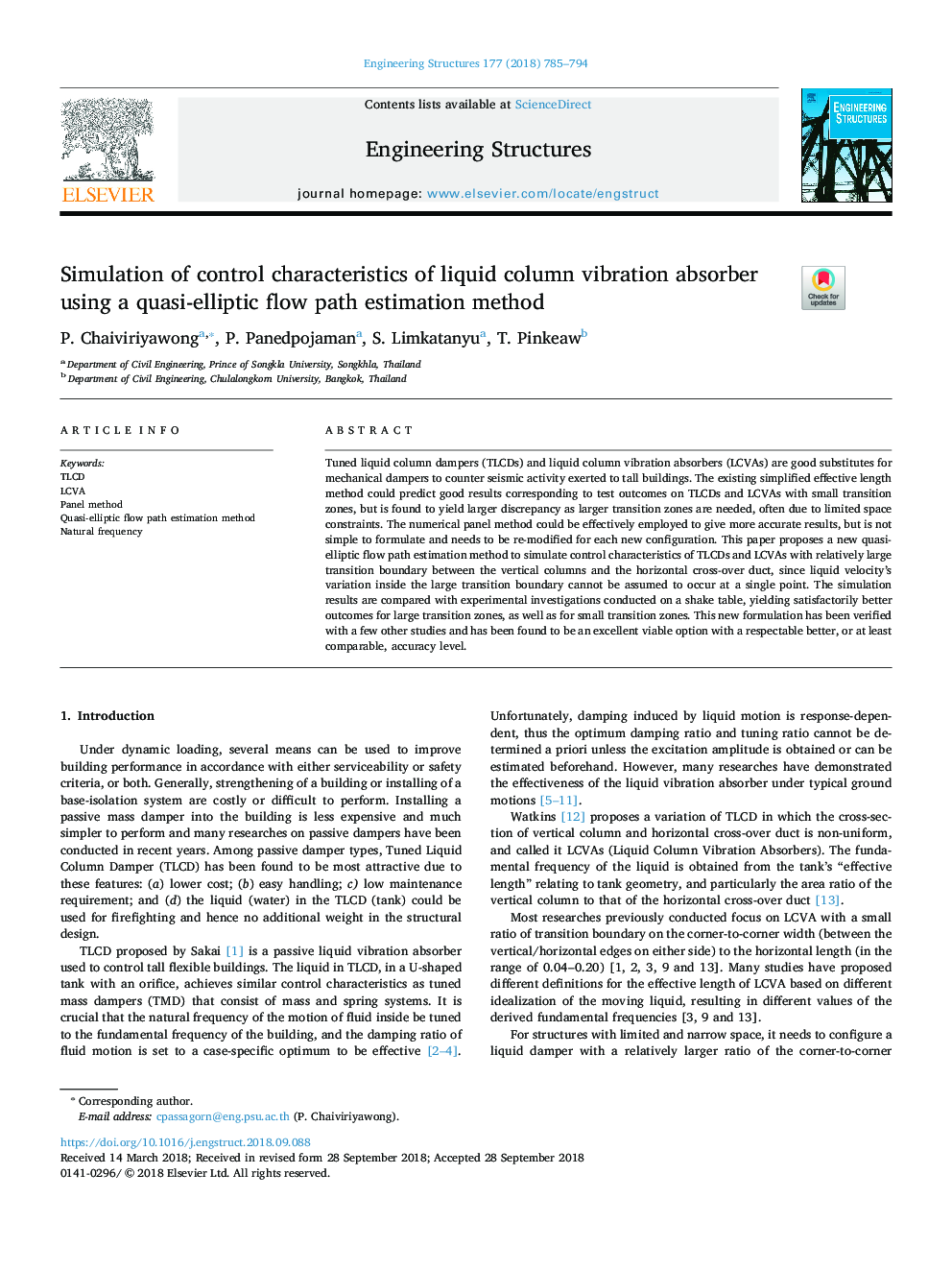| Article ID | Journal | Published Year | Pages | File Type |
|---|---|---|---|---|
| 11021377 | Engineering Structures | 2018 | 10 Pages |
Abstract
Tuned liquid column dampers (TLCDs) and liquid column vibration absorbers (LCVAs) are good substitutes for mechanical dampers to counter seismic activity exerted to tall buildings. The existing simplified effective length method could predict good results corresponding to test outcomes on TLCDs and LCVAs with small transition zones, but is found to yield larger discrepancy as larger transition zones are needed, often due to limited space constraints. The numerical panel method could be effectively employed to give more accurate results, but is not simple to formulate and needs to be re-modified for each new configuration. This paper proposes a new quasi-elliptic flow path estimation method to simulate control characteristics of TLCDs and LCVAs with relatively large transition boundary between the vertical columns and the horizontal cross-over duct, since liquid velocity's variation inside the large transition boundary cannot be assumed to occur at a single point. The simulation results are compared with experimental investigations conducted on a shake table, yielding satisfactorily better outcomes for large transition zones, as well as for small transition zones. This new formulation has been verified with a few other studies and has been found to be an excellent viable option with a respectable better, or at least comparable, accuracy level.
Related Topics
Physical Sciences and Engineering
Earth and Planetary Sciences
Geotechnical Engineering and Engineering Geology
Authors
P. Chaiviriyawong, P. Panedpojaman, S. Limkatanyu, T. Pinkeaw,
